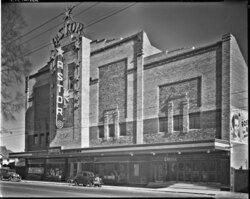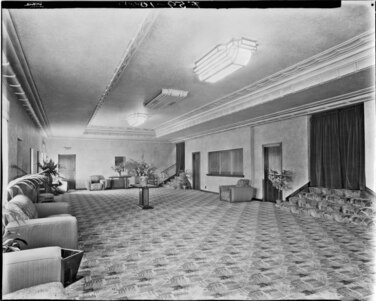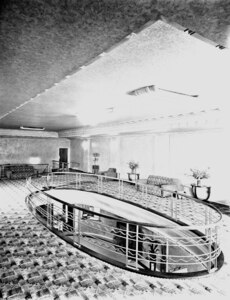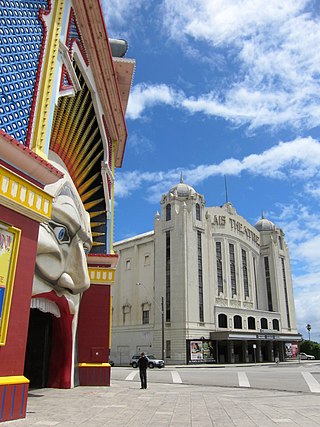
St Kilda is an inner seaside suburb in Melbourne, Victoria, Australia, 6 km south-east of the Melbourne central business district, located within the City of Port Phillip local government area. St Kilda recorded a population of 19,490 at the 2021 census.
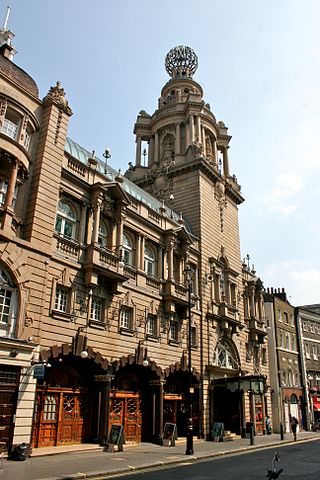
The London Coliseum is a theatre in St Martin's Lane, Westminster, built as one of London's largest and most luxurious "family" variety theatres. Opened on 24 December 1904 as the London Coliseum Theatre of Varieties, it was designed by the architect Frank Matcham for the impresario Oswald Stoll. Their ambition was to build the largest and finest music hall, described as the "people's palace of entertainment" of its age.

The HOYTS Group of companies in Australia and New Zealand includes HOYTS Cinemas, a cinema chain, and Val Morgan, which sells advertising on cinema screens and digital billboards.
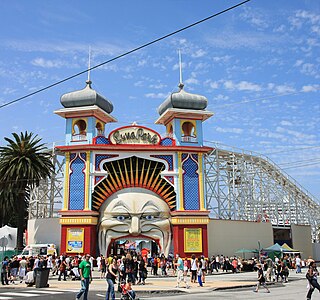
Luna Park Melbourne is a historic amusement park located on the foreshore of Port Phillip Bay in St Kilda, Melbourne, Victoria. It opened on 13 December 1912, with a formal opening a week later, and has been operating almost continuously ever since.

The double feature is a motion picture industry phenomenon in which theatres would exhibit two films for the price of one, supplanting an earlier format in which the presentation of one feature film would be followed by various short subject reels.

The Empire Theatre is a heritage-listed theatre at 56 & 56A Neil Street, Toowoomba, Toowoomba Region, Queensland, Australia. It was added to the Queensland Heritage Register on 31 May 1994.

The Capitol is a theatre on Swanston Street in the central business district (CBD) of Melbourne, Victoria, Australia. Opened in 1924 as part of the Capitol House building, the theatre was designed by American husband and wife architects Walter Burley Griffin and Marion Mahony Griffin. It is the oldest of Melbourne's large picture palaces and is known for its extravagant decor and abstract motifs, including an intricate geometric ceiling containing thousands of coloured lights designed to evoke the walls of a crystalline cave.

The Valhalla Cinema was a repertory and arthouse cinema in Melbourne, Australia. Noted for audience participation films, it was named for Valhalla, the "Hall of the slain" in Norse mythology. It ran as the Valhalla at Victoria Street, Richmond from 1976 until 1987, when it moved to the present location of the Westgarth Theatre in Northcote. In 1996 the Valhalla closed its doors and became Westgarth Cinema, now the Palace Westgarth.

The Palais Theatre, formerly known as Palais Pictures, is a historic picture palace located in St Kilda, an inner suburb of Melbourne, Victoria, Australia. With a capacity of nearly 3,000 people, it is the largest seated theatre in Australia.

The State Theatre is a 2034 seat heritage listed theatre located at 47–51 Market Street, in the Sydney central business district in the City of Sydney local government area of New South Wales, Australia. The theatre was designed by Henry Eli White with assistance from John Eberson and built between 1926 and 1929. It hosts film screenings, live theatre and musical performances, and since 1974 it has been the home of the annual Sydney Film Festival. It is also known as State Building and Wurlitzer Organ. The property is privately owned. It was added to the New South Wales State Heritage Register on 2 April 1999.
In its days as an entertainment centre for London, Harringay in North London also provided more locally directed entertainment in the shape of four cinemas. The earliest was opened in 1910 and was operating as a cinema until January 2003.
Palace Cinemas is an Australian cinema chain that specialises in arthouse and international films.

The Palais de Danse was a large dance hall located next to the Palais Theatre in the entertainment precinct of the foreshore of St Kilda, a beachside inner suburb of Melbourne, Victoria, Australia. Built in 1919, it featured a remarkable geometric interior created in 1920 by the renowned architects Walter Burley Griffin and his wife, Marion Griffin (1871–1961), and it was a popular entertainment venue throughout the early 20th century. The building was destroyed by fire in 1969.

Strand Theatre is a heritage-listed cinema at 159–167 Margaret Street, Toowoomba City, Toowoomba, Toowoomba Region, Queensland, Australia. It was designed by George Henry Male Addison and built from 1915 to 1933 by Luke Halley. It was added to the Queensland Heritage Register on 21 October 1992.
New Farm Cinemas is a cinema at 701 Brunswick Street, New Farm, City of Brisbane, Queensland, Australia. It was first built c. 1921. It is also known as Astor Theatre, Merthyr Picture Palace, and Village Twin Cinema Complex. While not heritage-listed itself, the New Farm Cinemas redevelopment has retained elements of the heritage-listed Village Twin Cinema, which was added to the Queensland Heritage Register on 24 March 2000.

Astor Theatre is a heritage-listed cinema at 77 Burrowes Street, Surat, Maranoa Region, Queensland, Australia. It was built from 1925 to 1960s. It was added to the Queensland Heritage Register on 27 September 2002.

The Melbourne Queer Film Festival (MQFF) is an annual LGBT film festival held in Melbourne, Victoria, Australia in November. Founded in 1991, it is the largest queer film event in the Southern Hemisphere, in 2015 attracting around 23,000 attendees at key locations around Melbourne.

The Odeon Theatre is a historic former cinema and current live entertainment venue in the city of Hobart, Tasmania, Australia.

The Westgarth Theatre, formerly the Valhalla Cinema and now operating as the Palace Westgarth, is a heritage-listed movie theatre in the Westgarth neighbourhood of Northcote in Melbourne, Australia. It is the oldest continually-operating, purpose-built cinema in the city.
